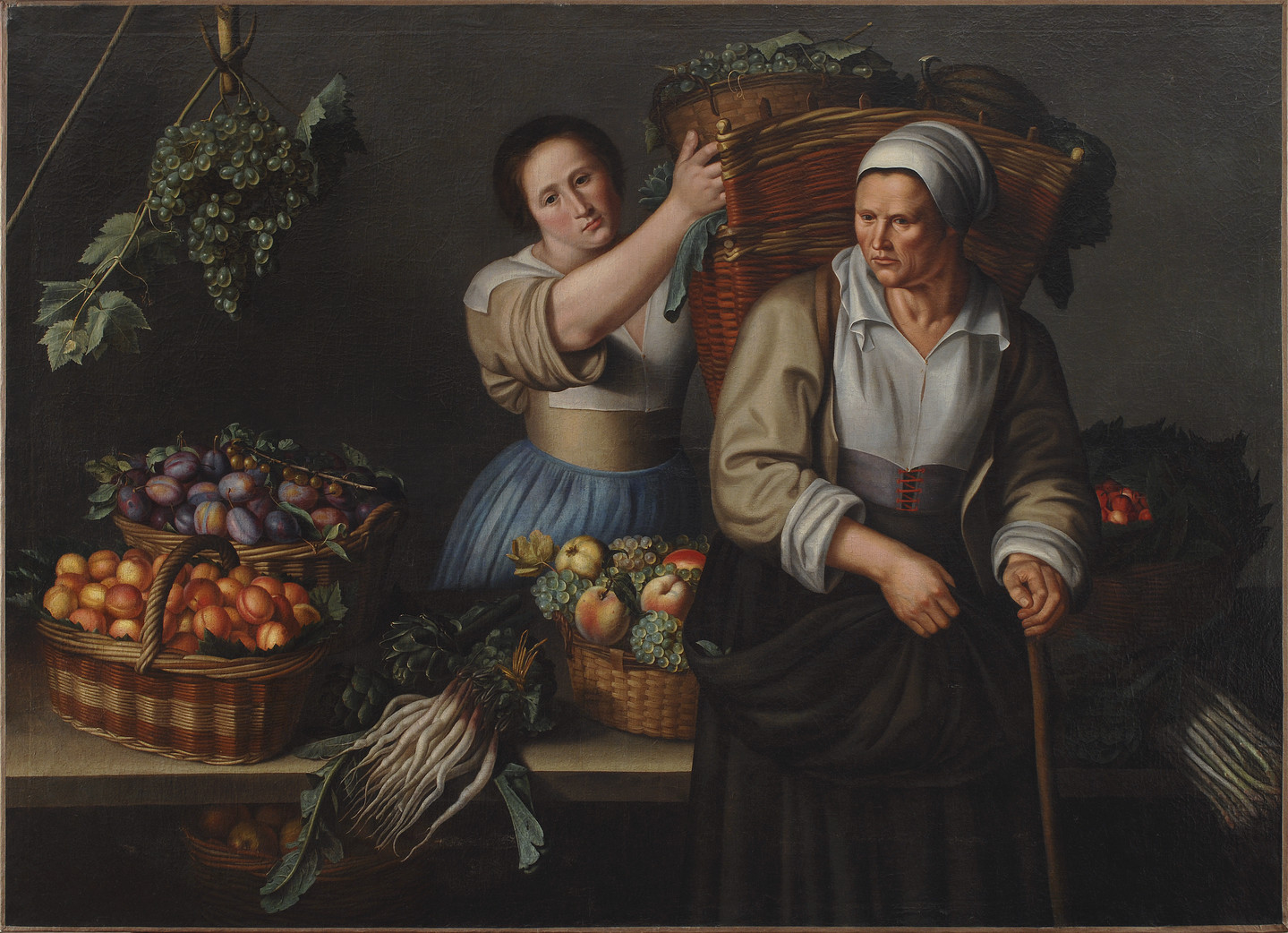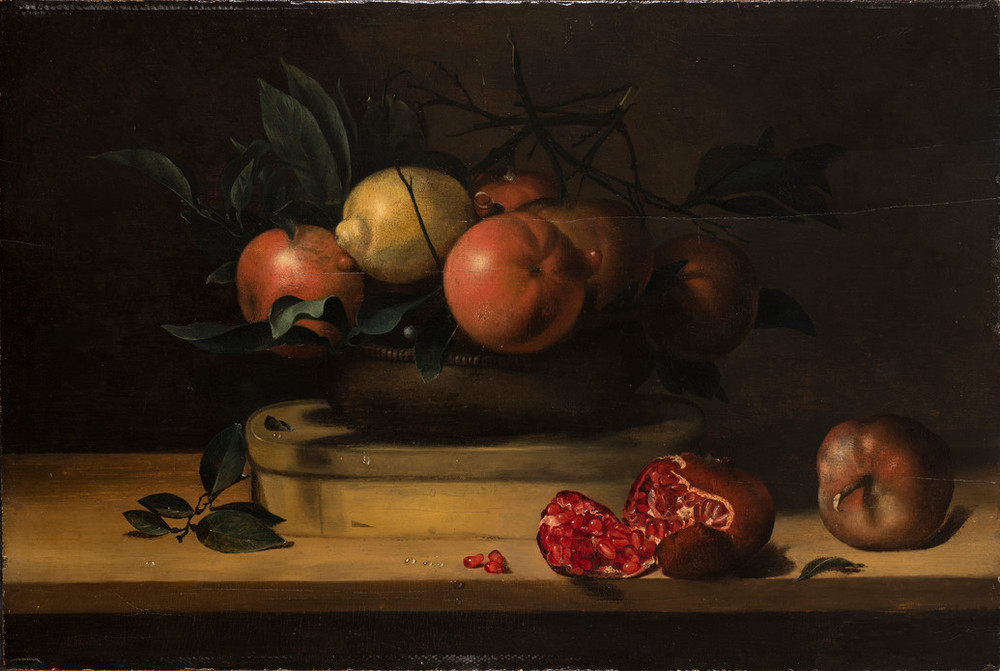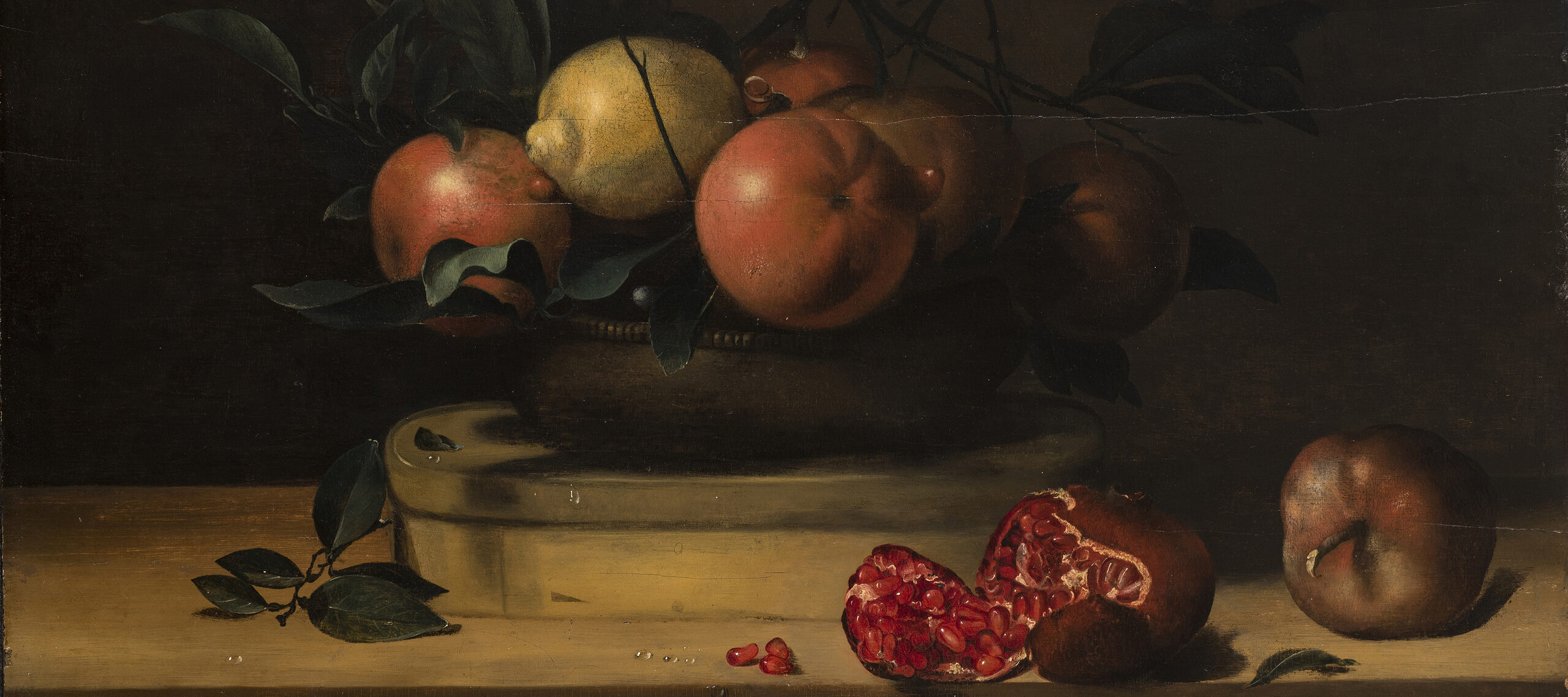Louise Moillon is an enigma. Born in 1609 or 1610 in France to a Protestant family, her works reflect a distinct Flemish influence, yet at the same time reject the vanitas symbolism that so often marks Northern still-lifes of the 17th century. She painted finely crafted tableaux as a precociously talented young woman, yet mysteriously appears to have stopped in the 1640s. Her life and career represent a crossroads: the inspired moment when French still-life begins to emerge as an independent tradition meeting the quotidian reality of a 17th-century Protestant woman’s life.

From birth, Moillon inherited a rich artistic heritage. Both her father and stepfather were painters and picture dealers, while her brother Isaac was one of the earliest members of the French Royal Academy of Painting and Sculpture. Living in the neighborhood of Saint-Germain-des-Prés, known at the time for its community of Protestants fleeing persecution in the Netherlands, she was introduced at an early age to the Northern traditions of still-life painting. Surviving business contracts reveal that as early as age 11 she was showing promise as a professional artist. However, her last clearly dated work is from 1641, suggesting that she stopped working long before she passed away in 1696. Art historians generally believe that this cessation is due to her marriage in 1640 to Calvinist wood merchant Etienne Girardot de Chancourt. The duties of wife and, later, mother prevented her from pursuing her painting career, while conservative Calvinist theology discouraged women from working independently from their husbands and families.

Yet Moillon’s works are far from puritanical. Her lush and luminescent palette calls to mind sensuality, not severity. Absent of the strict morality often associated with still-lifes of the period, her fruit baskets shine as symbols of abundance and prosperity. No hint of decay is found, suggesting the present moment, intimately shared, instead of warning against future drama on a monumental scale. Later in her career, she incorporated large-scale human figures in her paintings, one of the first French still-life artists to do so. Enlivening her canvases, these figures place her overflowing baskets in a specific context, one in which the array of fruit is matched by the diversity of figures and experience.
A Market Stall with a Young Woman Giving a Basket of Grapes to an Older Woman, c. 1630, is currently on display in NMWA’s Great Hall. The two female figures, contrasting significantly in age, suggest the cycle of life, but one in which signs of rot and decomposition are not present. Multiple baskets frame the composition, each one overflowing with round, luscious fruits, whether they are plums, apricots, apples, or pears. Both young and old are found in this world of delicious abundance. Comparing this painting to a Flemish still-life indicates how Moillon set out to work in a specifically French idiom. Clara Peeters’s Still Life of Fish and Cat, hanging on the same wall in the Great Hall, more overtly portrays a moral tale; in this case, the transitory nature of the world, where the vivid fish becomes vulnerable to the vicissitudes of the food chain cat and man dominate. Its dark palette suggests a more somber tone than the bright oranges, purples, and greens illuminating Moillon’s work.
Despite the few facts available about her life and limited surviving canvases, we can construct an image of Louise Moillon. She was traditional in the dominance her personal life had over her public image as an artist, yet trailblazing in her brief career as a painter, contributing to a new national style of still-life.
